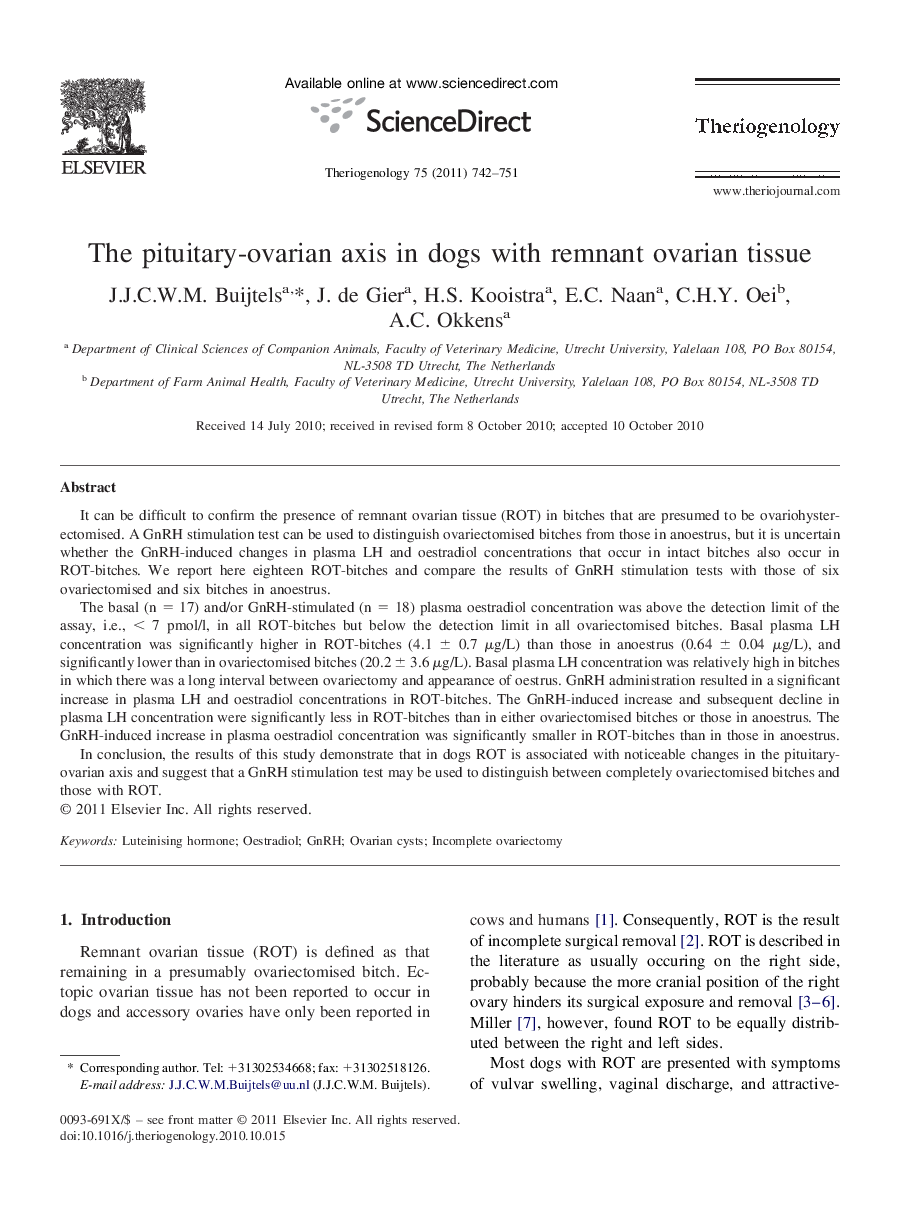| Article ID | Journal | Published Year | Pages | File Type |
|---|---|---|---|---|
| 2095724 | Theriogenology | 2011 | 10 Pages |
It can be difficult to confirm the presence of remnant ovarian tissue (ROT) in bitches that are presumed to be ovariohysterectomised. A GnRH stimulation test can be used to distinguish ovariectomised bitches from those in anoestrus, but it is uncertain whether the GnRH-induced changes in plasma LH and oestradiol concentrations that occur in intact bitches also occur in ROT-bitches. We report here eighteen ROT-bitches and compare the results of GnRH stimulation tests with those of six ovariectomised and six bitches in anoestrus.The basal (n = 17) and/or GnRH-stimulated (n = 18) plasma oestradiol concentration was above the detection limit of the assay, i.e., < 7 pmol/l, in all ROT-bitches but below the detection limit in all ovariectomised bitches. Basal plasma LH concentration was significantly higher in ROT-bitches (4.1 ± 0.7 μg/L) than those in anoestrus (0.64 ± 0.04 μg/L), and significantly lower than in ovariectomised bitches (20.2 ± 3.6 μg/L). Basal plasma LH concentration was relatively high in bitches in which there was a long interval between ovariectomy and appearance of oestrus. GnRH administration resulted in a significant increase in plasma LH and oestradiol concentrations in ROT-bitches. The GnRH-induced increase and subsequent decline in plasma LH concentration were significantly less in ROT-bitches than in either ovariectomised bitches or those in anoestrus. The GnRH-induced increase in plasma oestradiol concentration was significantly smaller in ROT-bitches than in those in anoestrus.In conclusion, the results of this study demonstrate that in dogs ROT is associated with noticeable changes in the pituitary-ovarian axis and suggest that a GnRH stimulation test may be used to distinguish between completely ovariectomised bitches and those with ROT.
